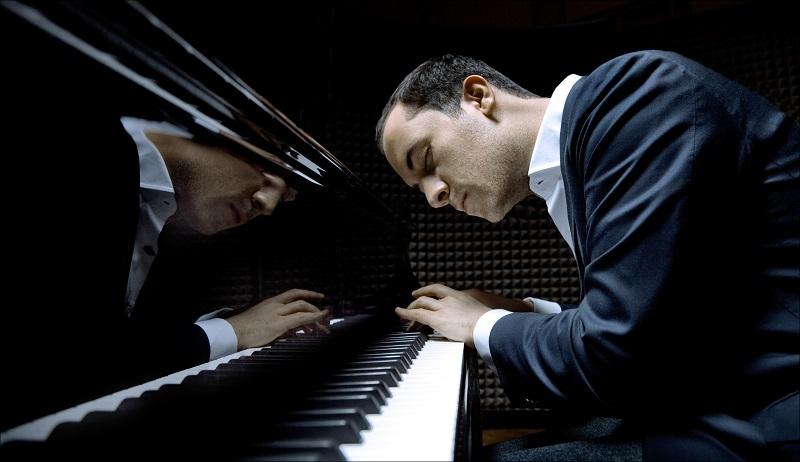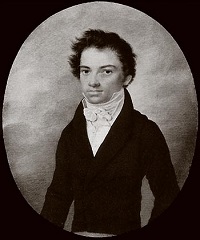Igor Levit, Wigmore Hall | reviews, news & interviews
Igor Levit, Wigmore Hall
Igor Levit, Wigmore Hall
Fiery, bold readings delivered with precision and focus

Igor Levit began his recording career with Beethoven’s last three piano sonatas, and his deeply felt, impressively mature readings made his name. Now he is performing a full cycle at the Wigmore Hall, and his take on the earlier sonatas turns out to be very much in the same spirit. There is little sense of Classical reserve in Levit’s early Beethoven; instead everything is performed in an intensely expressive style. It’s impulsive and unpredictable, with huge contrasts of dynamic and tempo.
The ‘Tempest’ Sonata (op. 31, no. 2) begins in quiet, rising arpeggios, which Levit delivered in a hushed whisper, his attack on each note crystal clear, but the phrases held together through generous, but judicious, pedalling. The Allegro arrived as an eruption, the contrast intense but precisely calculated for maximum effect. Levit presents thematic statements with bold, dynamic emphasis, but his approach to development sections is more revealing. Every phrase is inflected and propelled through subtle rubato, but tempo and texture changes between phrases are more sudden, previous thoughts set aside as the music moves off in a new direction. Yet somehow a consistency is retained, perhaps through the sheer elegance of Levit’s melodic playing, or through the propulsive energy behind each phrase.
Those contrasts and shifts were even more evident in the earlier op. 22 Sonata, where phrases are shorter and dynamic changes more frequent. But, again, a feeling of broad melodic contours held the constantly changing textures together. Levit actively interprets every phrase, and his readings seem all the more sophisticated when Beethoven’s inspiration drops. When, in the first movement development, Beethoven simply presents the same idea repeatedly in different keys, Levit brings a new texture and mood to each, now warm and ebullient, now cold and brittle.

The familiarity of the ‘Pathétique’ made Levit’s distinctive approach seem all the more iconoclastic, but also emphasised how his interpretive ideas come directly from the music itself. As in the ‘Tempest’, the contrast between the slow introduction and the main allegro was sudden and shocking. But the allegro itself was equally complex and varied, with Levit unconcerned by the lack of tempo changes and the more modest dynamic indications, continuing his ever-changing textures and moods. Levit’s approach to ornaments in this first movement was indicative; there was no sense of holding back, every note, however short, is given equal emphasis, continuing the smooth, unambiguous melodic line. The slow movement offered a rare moment of repose, with Levit focusing squarely on the beauty of the melody, before the Rondo finale brought the evening to a compelling close. Levit has a tendency, especially in final movements, to accelerate into cadences, and then punch out the final chords. In other hands, the coda of the ‘Pathétique’ might underwhelm as a recital ending, but Levit’s keen sense of drama and ability to intensify the music in an instant brought the ideal weight to these otherwise modest closing gestures.
- Igor Levit’s Beethoven Sonata cycle continues at Wigmore Hall on 30 January 2017: https://wigmore-hall.org.uk/whats-on/igor-levit-201701301930
- Read more classical music reviews on theartsdesk
rating
Explore topics
Share this article
The future of Arts Journalism
You can stop theartsdesk.com closing!
We urgently need financing to survive. Our fundraising drive has thus far raised £49,000 but we need to reach £100,000 or we will be forced to close. Please contribute here: https://gofund.me/c3f6033d
And if you can forward this information to anyone who might assist, we’d be grateful.

Subscribe to theartsdesk.com
Thank you for continuing to read our work on theartsdesk.com. For unlimited access to every article in its entirety, including our archive of more than 15,000 pieces, we're asking for £5 per month or £40 per year. We feel it's a very good deal, and hope you do too.
To take a subscription now simply click here.
And if you're looking for that extra gift for a friend or family member, why not treat them to a theartsdesk.com gift subscription?
more Classical music
 Echo Vocal Ensemble, Latto, Union Chapel review - eclectic choral programme garlanded with dance
Beautiful singing at the heart of an imaginative and stylistically varied concert
Echo Vocal Ensemble, Latto, Union Chapel review - eclectic choral programme garlanded with dance
Beautiful singing at the heart of an imaginative and stylistically varied concert
 Scott, Irish Baroque Orchestra, Whelan, RIAM, Dublin review - towards a Mozart masterpiece
Characteristic joy and enlightenment from this team, but a valveless horn brings problems
Scott, Irish Baroque Orchestra, Whelan, RIAM, Dublin review - towards a Mozart masterpiece
Characteristic joy and enlightenment from this team, but a valveless horn brings problems
 Classical CDs: Voice flutes, flugelhorns and froth
Baroque sonatas, English orchestral music and an emotionally-charged vocal recital
Classical CDs: Voice flutes, flugelhorns and froth
Baroque sonatas, English orchestral music and an emotionally-charged vocal recital
 Kanneh-Mason, Britten Sinfonia, Shave, Milton Court - a grin and a big beaming smile
A pair of striking contemporary pieces alongside two old favourites
Kanneh-Mason, Britten Sinfonia, Shave, Milton Court - a grin and a big beaming smile
A pair of striking contemporary pieces alongside two old favourites
 theartsdesk at the New Ross Piano Festival - Finghin Collins’ musical rainbow
From revelatory Bach played with astounding maturity by a 22 year old to four-hand jazz
theartsdesk at the New Ross Piano Festival - Finghin Collins’ musical rainbow
From revelatory Bach played with astounding maturity by a 22 year old to four-hand jazz
 First Person: Manchester Camerata's Head of Artistic Planning Clara Marshall Cawley on questioning the status quo
Five days of free events with all sorts of audiences around Manchester starts tomorrow
First Person: Manchester Camerata's Head of Artistic Planning Clara Marshall Cawley on questioning the status quo
Five days of free events with all sorts of audiences around Manchester starts tomorrow
 Goldscheider, Brother Tree Sound, Kings Place review - music of hope from a young composer
Unusual combination of horn, strings and electronics makes for some intriguing listening
Goldscheider, Brother Tree Sound, Kings Place review - music of hope from a young composer
Unusual combination of horn, strings and electronics makes for some intriguing listening
 theartsdesk Q&A: composer Donghoon Shin on his new concerto for pianist Seong-Jin Cho
Classical music makes its debut at London's K-Music Festival
theartsdesk Q&A: composer Donghoon Shin on his new concerto for pianist Seong-Jin Cho
Classical music makes its debut at London's K-Music Festival
 Helleur-Simcock, Hallé, Wong, Bridgewater Hall, Manchester review - moving lyricism in Elgar’s concerto
Season opener brings lyrical beauty, crisp confidence and a proper Romantic wallow
Helleur-Simcock, Hallé, Wong, Bridgewater Hall, Manchester review - moving lyricism in Elgar’s concerto
Season opener brings lyrical beauty, crisp confidence and a proper Romantic wallow
 Kohout, Spence, Braun, Manchester Camerata, Huth, RNCM, Manchester review - joy, insight, imagination and unanimity
Celebration of the past with stars of the future at the Royal Northern College
Kohout, Spence, Braun, Manchester Camerata, Huth, RNCM, Manchester review - joy, insight, imagination and unanimity
Celebration of the past with stars of the future at the Royal Northern College

Add comment